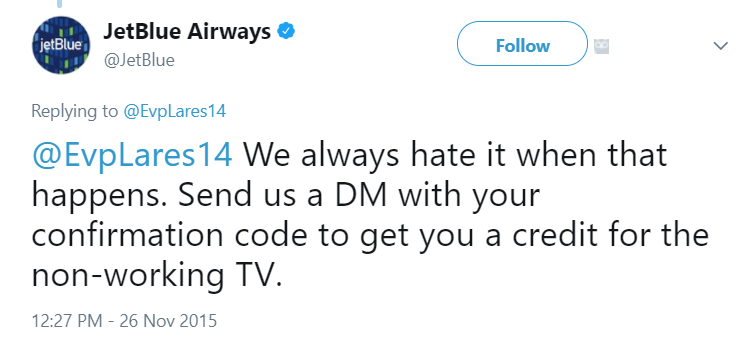It happens to the best of us. No matter how vigilant you are at being a fabulous company with fantastic customer service, negative reviews happen.
A product gets damaged during shipping, someone doesn’t have the experience they were expecting or an employee goofs. We’re all human, and it happens!
It’s how you handle the negative reviews, though, that’ll determine the health of your business’s reputation online. If you leave those poor reviews there to fester and influence other potential customers, that’s a problem.
According to BrightLocal’s Local Consumer Review Survey, 85% of consumers trust online reviews as much as personal recommendations, and 97% of consumers read online reviews for local businesses in 2017.
So, not managing your reviews are just inviting consumers to choose one of your competitors that does. It’s just that simple.
If you’re here and ready to learn responding to negative reviews, that’s an awesome first step! We’re glad you’re thinking about how to manage your online reviews.
To take things a step further after you read the rest of this article, make sure to check out the features you get with Rize Reviews or sign up for a quick demo.
Here are 6 steps to take to respond to negative reviews.
1. Gather the facts and check your emotions at the door.
What happened, how did it happen, and why did it happen? Talk to the employees or team members involved. Make sure you get the whole story before responding.
It’s safest not to make assumptions here. Also, try to leave your emotions out of the equation. No matter how unfounded the review is or how rude the reviewer is or how wrong he or she is about your company and what happened, don’t let anger sneak into your answer in the form of passive aggressive language.
The LAST thing you want to do is look like an emotional jerk in front of potential customers.
2. Start with an apology.
You have a couple of choices about how to respond, but the one thing you should always include is an apology.
Even if you feel your company wasn’t in the wrong in any way, start with an apology anyway. Begin writing your response and start with something like:
- I’m so sorry about your experience with [your company] wasn’t what you were expecting.
- I’m so sorry [your product] didn’t fit your needs.
- I’m so sorry about your experience with [your team] didn’t go as planned.
- I’m so sorry you had a bad experience with [your company].
Whatever it is that the customer is upset about, you should just apologize for it. Notice that the apologies above don’t acknowledge wrongdoing.
If you were clearly in the wrong, you may want to say something that does acknowledge it – even something simple, like “We screwed up.”
Taking responsibility for what happened if it truly was your fault will not only potentially appease the reviewer but will also impress prospects who read it.
For an awesome example of an apology, check out this hotel in Australia on TripAdvisor.
3. Offer the reviewer something.
Next, offer something to appease the situation.
Replace the damaged product, send a free gift or valuable coupon, or just give out a direct line and name to call to talk about what went wrong.
Make sure whoever is on the receiving end of that number has all the details, though – if the reviewer calls and the person reached has no idea what’s happened, that’s sure to exacerbate the situation.
People who write negative reviews mostly just want their story to be heard and acknowledged, and then they want the wrong to be righted. Apologizing and offering something addresses both of those situations.
JetBlue has a great example of an offer! This tweet was in response to someone whose TV wasn’t working during his flight.

4. Have someone else read your response.
Do not skip this step! Have someone else on your team read through your response BEFORE you post it. Something that looks completely fine to you might sound snarky or condescending to someone else on your team.
Make sure the team member reads both the review and your response with a critical eye.
5. Post your review publicly.
Most review platforms allow you to respond to reviews as the business owner. Google, Yelp, Facebook, and more all allow you to respond.
6. Ask for an edit.
If and only if things go well after you post the response, ask the reviewer to reconsider his or her review.
For instance, if you solved the problem by sending the reviewer a new product or giving them a refund or going back and fixing a service they had a problem with, that would be an appropriate time to ask for them to reconsider their review.
If they’re satisfied with your response, perhaps they’ll give you another star. It’s EXTREMELY important to play this one by ear. Read the reviewer’s mood and response and decide if it would be appropriate to ask for the edit.
Need help monitoring and managing your reviews online? Check out Rize Reviews now!
